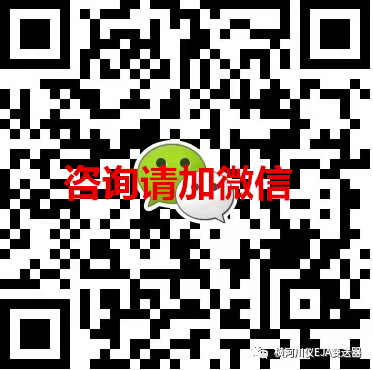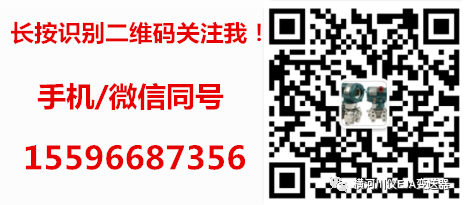Advantages of Yokogawa EJA Differential Pressure Transmitter!
1. Simplified System Composition
The EJA differential pressure transmitter only requires simple settings to obtain an output signal that relates to the input differential pressure signal’s square root. This eliminates the need for the square root element used in differential pressure flowmeters, thereby simplifying the composition of measurement and control systems. The benefits are self-evident. At the same time, the unique aspect of small signal cut-off after squaring is noteworthy. There are two methods for small signal cut-off: one is complete cut-off when the output signal is below the cut-off point, similar to a standard squarer. The second is a linear relationship between output signal and input differential pressure signal when the output signal is below the cut-off point. The cut-off point for both methods can be continuously adjusted between 0%-20%. The linear cut-off method is beneficial for field operations when measuring the lower limit flow.
2. Convenient Display of Various Parameters on-Site
With simple settings, the EJA transmitter’s built-in LCD module can display various data. For example, a pressure transmitter can directly display the input pressure and the corresponding unit on the LCD, while a differential pressure transmitter can indicate user-defined flow engineering values on the LCD. In certain situations, on-site primary indicating instruments, such as pressure gauges and rotameters, can be omitted without affecting on-site monitoring and operation. The LCD display module features a forced self-diagnosis display function. If the measured parameters exceed the range or if the transmitter itself fails, the LCD will display an error code instead of the originally set parameters, facilitating timely fault resolution. If accessed through the EJA terminal, more process information can be read from the transmitter.
3. Actual Verification of Original Design Differential Pressure
In a certain factory’s copper alkali washing section, a differential pressure flowmeter is used to measure air flow. The air is used to adjust the copper ratio after the waste copper liquid is regenerated. The designed differential pressure value for this flowmeter is 10KPa, but it has never operated normally. On-site operators can only rely on experience to judge and control air flow, leading to randomness and blindness in the process operation; excessive air flow can elevate the oxygen content in the system, threatening system safety. Considering that the air flow is small, the process pipeline is small, and deviations exist in the corresponding process parameters in the original design, the theoretical verification of the original design differential pressure value becomes less meaningful.
In the application of differential pressure flowmeters, especially in the measurement of small flows and small pipes, a series of issues may arise, including severe deviations of process parameters from actual conditions. These lead to significant errors in the original design differential pressure value, resulting in abnormal operation of the entire flowmeter. At this point, the introduction of the EJA differential pressure transmitter can simplify matters, allowing for direct measurement of the pressure difference before and after the throttling element, thus correcting the original design value and resolving difficult issues.
After applying the EJA differential pressure transmitter, it has the capability to display the input differential pressure value. The unit can be selected from a specified series, making it very convenient to verify the design differential pressure value. With the cooperation of on-site personnel, the working differential pressure value and maximum differential pressure value of the flowmeter were actually measured. Surprisingly, the maximum differential pressure value reached 100KPa, which is ten times the original design value, explaining why the original differential pressure flowmeter could not operate normally. Based on this differential pressure value, the measurement upper limit of the transmitter was modified using the EJA terminal, achieving automatic measurement of air flow and resolving a long-standing problem that had previously remained unsolved.
4. Reducing the Number of Spare Instruments in Nitrogen Enterprises
Measuring the flow of hydrogen and fluorine mixed gas at the main inlet of the ammonia synthesis tower involves both large flow measurement and small flow measurement. Large flow is used during normal production of the synthesis tower, while small flow is used during the heating and reduction stage after catalyst replacement. When implemented with conventional differential pressure transmitters, a small range differential pressure transmitter must be installed during the heating and reduction stage (the actual differential pressure in this factory is KPa) to measure and control the safety gas volume (i.e., small flow) during electric furnace heating; after the heating and reduction stage ends, a large range differential pressure transmitter (actual differential pressure value of 254KPa) must be reinstalled for normal production of the synthesis tower. Typically, conventional differential pressure transmitters do not possess such a large range ratio. To meet production needs, the measurement of this flow actually requires two differential pressure transmitters.
Utilizing the EJA differential pressure transmitter, which has a large range ratio and self-setting and self-calibration capabilities, allows for main line flow measurement with just the modification of small and large range differential pressure values via the EJA terminal in the control room, achieving the same purpose. This avoids the disassembly and calibration of conventional differential pressure transmitters, reduces instrument maintenance workload, and decreases the number of spare instruments.
Migration of Differential Pressure Transmitters
1. Migration of Liquid Levels
When using a differential pressure transmitter to measure liquid levels, if the positive and negative pressure chambers of the differential pressure transmitter are at the same horizontal level as the pressure tapping point of the container, migration is not required. However, in actual applications, due to considerations of equipment installation position and maintenance convenience, the measuring instrument may not always be at the same horizontal level as the pressure tapping point; for example, if the measured medium is a highly corrosive or viscous liquid, it cannot be directly introduced into the measuring instrument. An isolation liquid tank must be installed to transmit pressure signals using isolation liquid to prevent corrosion of the measuring instrument. In this case, the impact of the medium and isolation liquid columns on the measuring instrument’s readings must be considered.
The installation methods of differential pressure transmitters for measuring liquid levels mainly involve three types. To accurately indicate the height of the liquid level, some technical processing—migration—must be performed on the differential pressure transmitter. Migration can be classified into no migration, negative migration, and positive migration.
2. No Migration
Install the positive and negative pressure chambers of the differential pressure transmitter at the same horizontal level as the pressure tapping point, as shown in the diagram. Let the pressure at point A be P-, and the pressure at point B be P+. If the density of the measured medium is p and the gravitational acceleration is g, then AP=P+-p=Pgh+p–p=pgh; if it is an open container, P- is atmospheric pressure. AP=P+=pgh. Thus, if the positive pressure chamber of the differential pressure transmitter is connected to the pressure tapping point and the negative pressure chamber is vented to the atmosphere, the height of the liquid can be determined by measuring the gauge pressure at point B.
When the liquid level h=0 changes to h=hmax, the differential pressure transmitter measures a change in differential pressure from △P=0 to △P=P+=ghmax, with the output changing from 4mA to 20mA.
Reasons for EJA Transmitter Errors and How to Correct Them
The number of users of the EJA transmitter is increasing, and some users may find that errors can occur during its use. So, what are the reasons for the errors in the EJA transmitter? How can they be corrected?
Reasons for EJA Transmitter Errors
These errors are primarily caused by the unequal effective areas of the positive and negative pressure chambers. Under the same pressure, the resultant force on the diaphragm is not zero, thus generating an additional moment M:, causing the main lever’s position to shift and leading to zero drift. The magnitude of this moment M: can be derived from the following formula: M: = (ΔA * P) / L, where ΔA is the difference in effective areas on both sides of the diaphragm, P is the static pressure, and L is the distance from the end of the main lever to the center of the sealing diaphragm. The differential pressure transmitter’s differential pressure scale is usually calibrated with the negative pressure chamber vented to the atmosphere. When installed in the field with actual static pressure applied, it is often found that the zero output does not match that of the calibration with the negative pressure chamber vented to the atmosphere. This deviation in zero output when the same static pressure is applied to the positive and negative pressure chambers is referred to as static pressure error.
If the static pressure error of the differential pressure transmitter is not corrected, it will introduce measurement errors in flow measurement, particularly at relatively low flow rates, where the impact is more significant. Therefore, we must correct the static pressure error before putting it into use. The specific correction method is as follows:
How to Correct EJA Transmitter Errors
The method involves applying the same static pressure to both the positive and negative pressure chambers. Open one of the high and low-pressure valves in the three-valve group while closing the other, and then open the balance valve. If it is suspected that the positive and negative pressure chambers are not fully filled with the measured medium, the air (or liquid) in the positive and negative pressure chambers can be purged through the vent (or drain) valve, and then the differential pressure transmitter’s output can be checked. This method can effectively eliminate static pressure errors, ensuring the measurement accuracy of the differential pressure transmitter.
The static pressure error of the differential pressure transmitter is caused by the unequal effective areas of the positive and negative pressure chambers. In the DDZ-III type differential pressure transmitter, static pressure errors can be as high as ±0.5% FS. In intelligent differential pressure transmitters, static pressure sensors are installed, and the deviation of the zero output is measured experimentally when static pressure varies within specified limits. This deviation is then corrected in the microcontroller within the instrument. After online correction of static pressure errors, the residual static pressure error can generally be reduced to below ±0.1%, significantly improving performance.
Recommended Reading:
1. Steps to Check Yokogawa EJA Transmitter After Water Ingress!
2. Basic Introduction to Yokogawa EJA120E Micro Differential Pressure Transmitter!
3. Introduction to Yokogawa EJA110E Differential Pressure Transmitter!
4. 12 Major Advantages of Yokogawa EJA Transmitter!
5. How to Solve Faults Occurring in Yokogawa EJA Transmitter?
6. What Are the Advantages of Yokogawa EJA Transmitter?
7. What Should Be Noted When Wiring Yokogawa EJA Transmitter?
8. Yokogawa EJX Differential Pressure Transmitter Selection Manual and Pricing!
9. Working Principle of Yokogawa EJA Transmitter!
10. Calibration Methods for Yokogawa EJA Transmitter?
11. How to Verify Zero Point of Yokogawa EJA110E Differential Pressure Transmitter Using the Head Button!
12. Reference Accuracy for Range Calibration of Yokogawa EJA110E Differential Pressure Transmitter!
13. Introduction to Intelligent Liquid Level Calibration of Yokogawa EJA/EJX Transmitters!
14. Selection and Model Interpretation of Yokogawa EJA110E Differential Pressure Transmitter!
15. Steps to Check Yokogawa EJA Transmitter After Water Ingress!
16. Common Function Setting Steps for Yokogawa EJA-E Series Transmitter Head Buttons!
17. How to Wire and Connect Chongqing Chuan Instrument PDS Intelligent Transmitter!
18. 12 Major Advantages of Yokogawa EJA Transmitter!
19. How to Repair Intelligent Yokogawa EJA Transmitter?
20. Precautions Before Using Yokogawa EJA110E Differential Pressure Transmitter!

